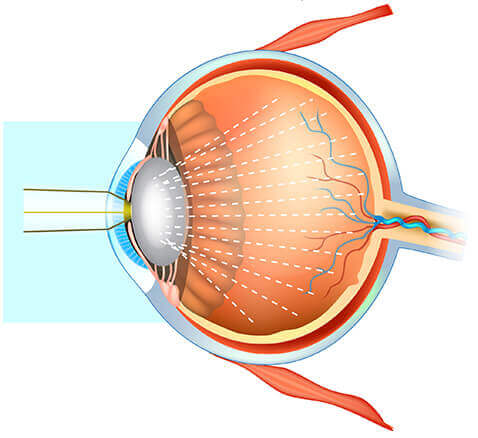Learn More About Cataracts

In a normal eye, light passes through the transparent lens to the retina. Once it reaches the retina, light is changed into nerve signals that are sent to the brain.
The lens must be clear for the retina to receive a sharp image. If the lens is cloudy from a cataract, the image you see will be blurred.
Cataract is an opacity or clouding of the normally crystalline lens of the eye, caused by the natural aging process, metabolic changes, injury, various forms of radiation, toxic chemicals and certain drugs. The leading cause of vision loss among adults age 60 or older, cataracts impair vision, making everyday activities increasingly difficult. In most cases, daily activities, such as driving and reading, can be resumed almost immediately, usually within a day or two. In simple terms, a cataract is usually part of the normal aging process that changes the natural, clear lens of the eye into a cloudy, opaque structure that inhibits or diminishes the passage of light to the retina. The condition can be compared to a window that is frosted or “fogged” with steam. Treatment of cataracts today is an outpatient, surgical procedure that takes only a short time.
Symptoms:
Patients with cataracts often experience the following symptoms:
- Blurring of vision
- Glare, or sensitivity to light.
- Double vision in one eye.
- Frequent changes in eyeglass prescription.
- Difficulty in reading in low light.
- Declining night vision.
- Fading or yellowing of colors.
A cloudy lens scatters light causing an image that’s out of focus and hazy.






Detection:
Adults over the age of 50 should schedule routine eye examinations on an annual basis to determine whether cataracts or other eye disorders are present. A thorough examination by an ophthalmologist usually includes:
- A visual acuity test to measure clarity at various distances.
- Pupil dilation to examine the lens and retina for other eye problems.
- Tonometry, a standard procedure to measure fluid pressure inside the eye.
